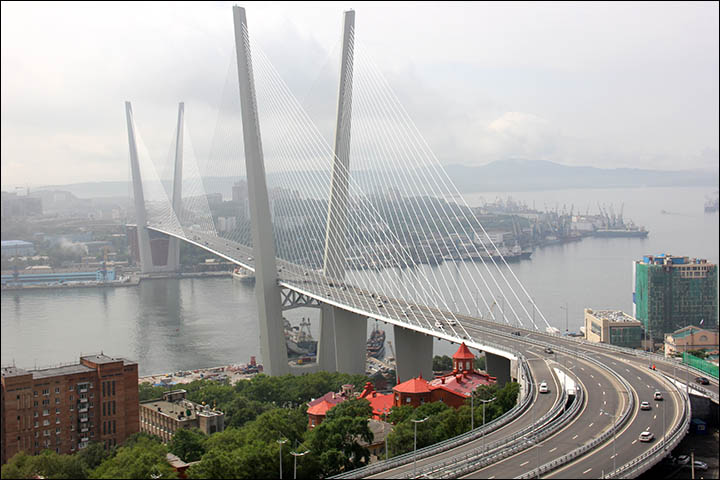
Moscow’s Empty Promises on Far East Could Undermine Government Credibility
Publication: Eurasia Daily Monitor Volume: 11 Issue: 192
By:

As more people die in eastern Ukraine in the fighting between government forces and Russia-backed rebels, Moscow seems determined to pursue its internal economic goals despite the damage already caused by the West’s sanctions. Russian Foreign Minister Sergei Lavrov said, on October 19, that his country will not make unilateral concessions in exchange for the lifting of the sanctions. Meanwhile, the Russian authorities continue to repeat that none of the ongoing domestic development projects will suffer from the diplomatic standoff with the West. The Russian Far East and neighboring Siberia are among the regions that have been receiving most budgetary aid in recent years and are often referred to by the government as “priority areas” (mk.ru, October 19).
In March 2014, Russia’s Ministry of Far Eastern Affairs suggested creating 23 “accelerated development zones” in the country’s easternmost provinces. These zones’ primary objective will consist of stimulating economic development by way of tax preferences and exemptions. According to Deputy Prime Minister Yuri Trutnev, more than 400 clusters were initially considered but only those with high-growth potential, especially in terms of unused industrial capacity, will benefit from state support. For instance, areas with a well-functioning oil and gas or coal industry have not made it onto the shortlist. Another way to boost regional economic growth is the proposed transfer of several public companies’ headquarters from Moscow over to the Far East so that they would have to pay all taxes to the local budgets. The lower chamber of the parliament (Duma) is currently examining the related draft law, which should be passed by the end of the year (vz.ru, October 15; rg.ru, March 21).
Later, in April, the government approved a federal program for the accelerated economic development of the Far Eastern and Baikal regions. This program will last until 2025 and is aimed at contributing to the diversification of the local economy and a step-by-step improvement of the socioeconomic and demographic situations. Its total budget is valued at some $8.4 billion, with the most substantial funding packages earmarked for 2015 ($1.8 billion) and 2016 ($1.9 billion). Yet, many questions have already been raised as to how efficiently these funds will be managed, especially if one remembers Russia’s poor anti-corruption record (this year, it was ranked 127th out of 177 countries in Transparency International’s Corruption Perceptions Index) and the limited control Moscow exercises over the far-flung territories (government.ru, April 15).
The business community has also expressed some fears about the new program’s eventual bias in favor of large companies, such as the hydro-electricity generator RusHydro, which plans to relocate to the Far East in the near future. Trutnev himself admits that it may actually take years for the authorities to persuade Russian entrepreneurs that doing business in the Far East can be both comfortable and profitable. Meanwhile, the demographic situation remains dramatic there, with tens of thousands of people choosing every year to leave the region in search of better-paid jobs and more decent living conditions. According to the official statistics, the population of the Far East currently stands at approximately 6.3 million people, or only 5 percent of Russia’s total population; it decreased by 22 percent between 1991 and 2010 (the last available year), thereby losing 1.8 million people (tpp-inform.ru, July 10; amur.info, June 25).
In September, Russian President Vladimir Putin held a meeting in Yakutsk where he harshly criticized the lack of progress on development projects in both the Far East and Siberia. The Development Fund of the Far East and the Baikal region?established in November 2011 as a branch of state-owned Vnesheconombank (VEB) and endowed with a budget of $367 million?was slammed by Putin for not having sponsored a single project since its inception. In fact, various government agencies and public firms apparently have different visions regarding the best possible use of these funds. The Russian Railways (RZD), which is headed by Putin’s close advisor Vladimir Yakunin, reportedly favors large infrastructure projects like in Soviet times. Instead, the more liberal-leaning Ministry of Economy, which is close to Prime Minister Dmitry Medvedev and his team, sees more added value in preferential loans to small and medium businesses (ng.ru, September 2; fondvostok.ru, October 16).
Moscow’s Far East policy is further undermined by such domestically controversial decisions as allowing more Chinese migrants into the region as of July, agreeing to farm out a stake in the Rosneft-operated Vankor hydrocarbon deposit to China National Petroleum Corporation (CNPC) as of September, or redirecting significant financial flows toward Crimea. On the last point, the government endorsed in mid-August a funding package for the peninsula in the amount of $16.7 billion until 2020?that is, nearly double what the Far East will receive by 2025. It is also considering a special tax regime for Crimea, for example a duty-free zone for select categories of imports/exports, zero taxes on certain investors’ land, property, transport and profits for up to ten years, preferential conditions for banks, as well as tax breaks for ship owners (newsru.com, October 15; vedomosti.ru, September 1; vz.ru, April 10).
All of these measures will no doubt cost billions of dollars for the federal budget while corruption is already rife within Crimea’s puppet government. The newly “elected” head of Crimea, Sergei Aksenov, recently said that only a small fraction of the funds allocated by Moscow since March for so-called “urgent needs” (restoring electricity and water supply, paying salaries to teachers, doctors, etc.) have been used so far. “We were given 23 billion rubles [$526.6 million] but have been able to spend only 10 percent of this amount. Now, we must do everything to prevent the embezzlement of what is left,” he said (vedomosti.ru, October 10). As the fleeting sentiment of euphoria after Crimea’s annexation from Ukraine has already evaporated, an increasing number of Russians are slowly discovering the real value of the government’s promises on the Far East and the progressively fewer chances for their eventual success.




